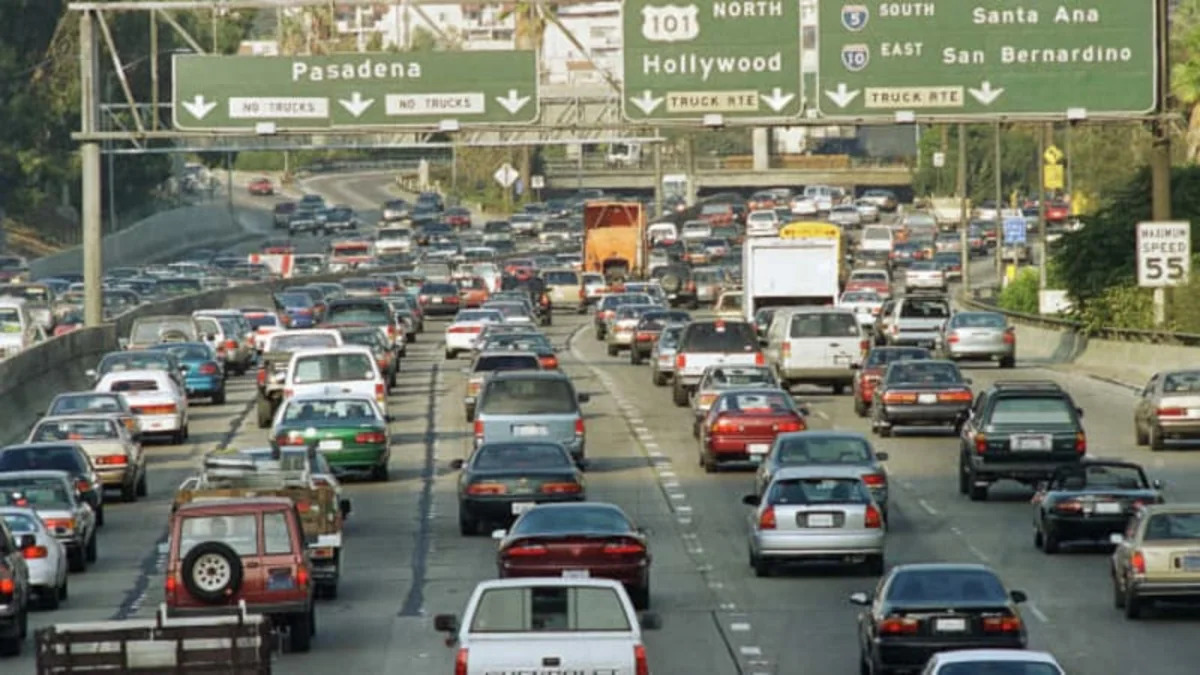It's easy to refer to the recession in 2008 as the point at which Americans started driving less, but a growing number of studies are showing that American driving peaked in 2004, The New York Times reports, and it's hard to quantify why.
A study recently published by the University of Michigan shows that miles driven in light-duty vehicles peaked in 2004 and fell five to nine percent through 2011. Several measures were used in the study, including distances driven per person, per registered vehicle, per licensed driver and per household, according to the Times, and all of the measures have decreased since 2004. Interestingly, light-duty fleet vehicle driving peaked in 2006, and decreased from 2.8 trillion miles driven per year to 2.6 trillion miles in 2011.
"I'm reasonably confident that 2006 was a temporary peak in driving," says Michael Sivak, a research professor at the school's Transportation Research Institute. "I'm less confident that the peaks in the rates reached in 2004 are temporary." Lifestyle changes, such as relocation to cities and increased telecommuting and public transit, are driving factors in Americans driving less miles, as is the aging of the driving population, Sivak says.
Micheline Maynard, former Detroit bureau chief for the New York Times, adds that young people tend "to be more infatuated with social media than with cars and driving," and the number of teenagers earning drivers licenses has reached "recent lows." And with gas prices high and money tight, people tend to cut cars from their lives first, says Maynard, adding that the Obama administration has improved public transit systems through aggressive financing of projects.
All of this has led to fewer vehicles on the road. Sivak found in a previous report that the number of registered light-duty vehicles peaked at 236 million in 2008 and has fallen since then to 234 million in 2011.
A study recently published by the University of Michigan shows that miles driven in light-duty vehicles peaked in 2004 and fell five to nine percent through 2011. Several measures were used in the study, including distances driven per person, per registered vehicle, per licensed driver and per household, according to the Times, and all of the measures have decreased since 2004. Interestingly, light-duty fleet vehicle driving peaked in 2006, and decreased from 2.8 trillion miles driven per year to 2.6 trillion miles in 2011.
"I'm reasonably confident that 2006 was a temporary peak in driving," says Michael Sivak, a research professor at the school's Transportation Research Institute. "I'm less confident that the peaks in the rates reached in 2004 are temporary." Lifestyle changes, such as relocation to cities and increased telecommuting and public transit, are driving factors in Americans driving less miles, as is the aging of the driving population, Sivak says.
Micheline Maynard, former Detroit bureau chief for the New York Times, adds that young people tend "to be more infatuated with social media than with cars and driving," and the number of teenagers earning drivers licenses has reached "recent lows." And with gas prices high and money tight, people tend to cut cars from their lives first, says Maynard, adding that the Obama administration has improved public transit systems through aggressive financing of projects.
All of this has led to fewer vehicles on the road. Sivak found in a previous report that the number of registered light-duty vehicles peaked at 236 million in 2008 and has fallen since then to 234 million in 2011.


Sign in to post
Please sign in to leave a comment.
Continue